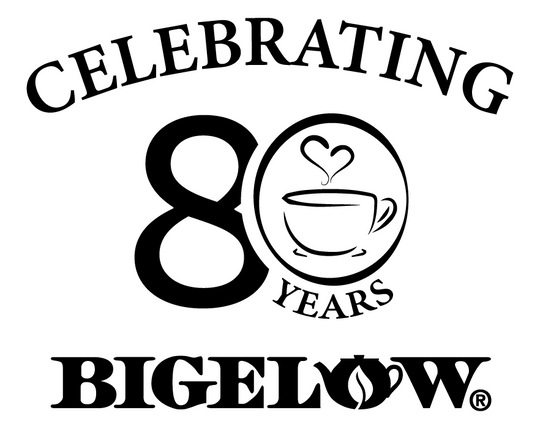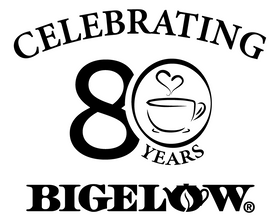Bigelow Tea's Community Garden: Community, Connection and Fresh Produce

Have you ever wondered how a cup of tea can bring a community together? At Bigelow Tea, we believe in the power of community gardens to cultivate not only flowers and vegetables, but also a sense of belonging and connection amongst neighbors both within our family-owned company and beyond. Community gardens are more than just plots of land, for they are vibrant spaces where people come together to design, build, and maintain a green oasis right in the heart of their community. Let’s learn more about gardens (including our community garden) and their impact!
What exactly is a Community Garden?
According to the American Community Gardening Association, a community garden can take many forms, whether it is an urban, suburban, or rural garden growing flowers, vegetables, and even comradery amongst the helpers. These gardens are different from parks or public spaces because they are managed by the residents themselves, allowing the community to decide the purpose of the garden and take responsibility for its maintenance.
Bigelow Tea’s Community Garden
Our Bigelow Tea community garden came to life through our empowered employees, known as the Green Team. Starting out over a decade ago, they designed, built, and now sustain this beautiful space at our Fairfield, Connecticut facility. To ensure success in maintenance and harvest, the Green Team follows a strategy of shared leadership, a best practice recommended by the Soil Science Society of America, where Bigelow employees come together to create short and long-term strategies based on each individuals’ strengths and availability. By involving multiple team members in leadership and decision-making processes, we are able to prevent burnout and create a sustainable, long-term garden and community. After all, gardening is no small task and sharing the workload ensures a more connected community where efforts are recognized and supported.
Crops in the Community Garden
We make a conscious effort to plant superfoods in our garden, as recommended by the American Community Gardening Association in partnership with the USDA. Superfoods are nutrient-rich foods, such as carrots, squash, strawberries, kale, green beans, cucumbers, and bell peppers, that offer significant health benefits. By prioritizing nutritional value in our harvest, we contribute to the overall well-being of the public through nutritional education and sharing healthy ingredients.
The Impact of Bigelow Tea’s Community Garden
Since the opening of our Fairfield community garden, we have donated a staggering 1813 pounds of freshly grown vegetables to the Bridgeport Rescue Mission (BRM). BRM is committed to providing food, shelter, clothing, education, job training, and counseling to those in need. By contributing farm-fresh food to their programs, we play a part in bringing about positive change in people's lives through energizing their daily activities through whole foods.
Steps to Create Your Own Community Garden
- Plan: It's not just about growing vegetables and managing soil; it's about setting goals, securing enough volunteers, and planning an annual budget to achieve those goals.
- Assign Roles and Responsibilities: Garden projects require a significant amount of work. That's why planning in advance and assigning responsibilities is crucial. Consider factors such as work schedules, vacations, and different team members' availability to ensure that your garden stays thriving throughout the season. Dedicate one person to oversee the budget while another coordinates schedules, determining the best times for planting, harvesting, and communicating these dates to all members.
- Crop Selection: Consider the local climate, available sunlight, and soil conditions to select a list of produce that will thrive in your community garden’s environment. Also, take into account the needs of the local community and aim to grow a variety of crops that will provide fresh produce throughout the season.
- Build the Garden Beds: When it comes to the garden beds themselves, we suggest using metal raised beds over wooden ones due to their longevity, with metal lasting over a decade with proper care, as well as price stability. However, considerations such as size, aesthetics, assembly, and cost should also be factored into your choice of garden beds.
- Get your hands dirty: At the beginning of the season, start by clearing the garden plot of weeds and expired plants, and then amend the soil with well-decomposed compost and organic materials. Observing the sun's path, strategically plan the layout of your garden beds to optimize sunlight exposure. And of course, plant, harvest bi-weekly, and deliver your bountiful harvest!
At Bigelow Tea, the Bigelow family’s commitment to our community garden is rooted in our company’s culture that started with founder Ruth Campbell Bigelow eighty years ago and continues today with president and CEO Cindi Bigelow’s commitment to a purpose far beyond making profits where the aim is to always do better.
We encourage everyone to explore the joy of gardening and its power to bring people together. Grab your gardening tools, dig into a world of community, connection, and fresh produce, and join us, through your garden, in nurturing the bonds that make neighborhoods flourish. Together, we can grow something truly extraordinary.



